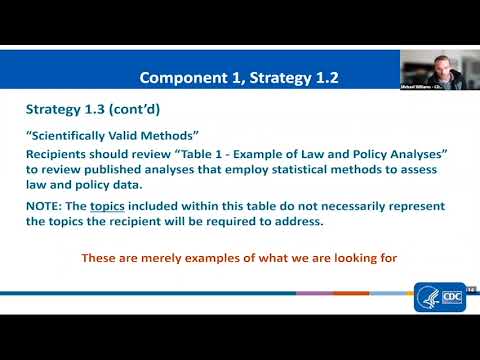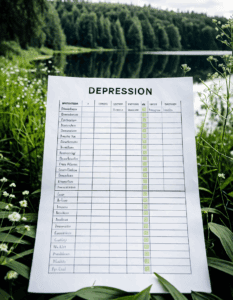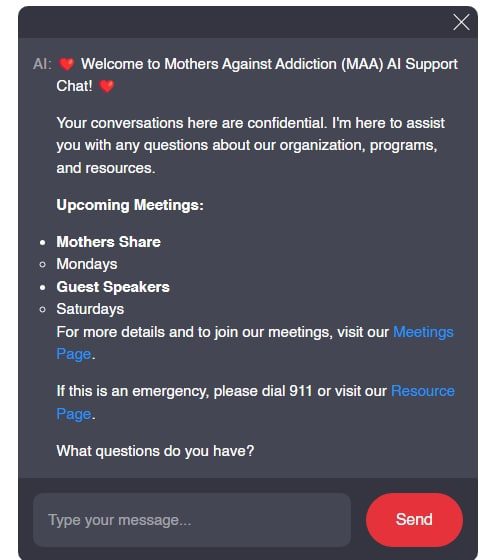In today’s world, supporting public health initiatives has emerged as a vital force in improving community health. With rising challenges like addiction, mental health crises, and contagious diseases, these initiatives are crucial for fostering healthier environments. When we rally behind public health efforts, we aren’t just investing in our own well-being; we’re banding together with our neighbors, opening doors for collaboration, funding resources, and community involvement that ultimately transforms lives. At Mothers Against Addiction, we know that understanding these foundational initiatives can empower parents and communities grappling with the effects of addiction both on individuals and families.
In the face of adversity, equipped knowledge can fuel resilience. The fight against addiction is a collective battle. It’s not just about parents saving their children; it’s a community pressing on together to forge a healthier future. From educational programs to advocating for marginalized communities, each act of support marks a step forward. By nurturing awareness and lending our voices, we can elevate our communities and ensure no one has to navigate this rugged path alone.
Understanding the Importance of Supporting Public Health Initiatives
Public health initiatives serve as lifelines, designed to tackle pressing health challenges while promoting the wellness of entire communities. These programs take various forms, such as vaccination drives, educational workshops, and health screenings, which actively aim to mitigate the impact of addiction and its personal toll on families. Supporting public health initiatives reveals a shared commitment to nurturing a healthier populace.
Take the California Asthma Public Health Initiative, for example. This remarkable effort works hand-in-hand with the National Asthma Education and Prevention Program (NAEPP) to enhance clinical care quality, ultimately reducing asthma-related problems and promoting vibrant living. Initiatives like this remind us that when community members unite, they can achieve what seems unattainable.
Moreover, supporting public health initiatives creates a ripple effect of transformation. Motivated groups and organizations can impact sectors such as mental health, nutrition, and addiction recovery, empowering families and creating significant change. By combining resource sharing and mobilizing collective voices, we amplify our efforts to spark real improvements in community health, particularly in dealing with the ongoing Opioid crisis response that continues to affect many families.
Top 7 Public Health Initiatives Making a Difference in 2024
The CDC is actively fighting against the rising tides of opioid addiction through education, prevention, and increasing treatment access. States like Massachusetts have successfully slashed overdose deaths by empowering healthcare providers with educational programs while expanding access to naloxone, a life-saving medication that reverses overdoses. When communities collaborate, change can ripple outwards, yielding positive outcomes.
Recognizing mental health as a crucial element of public health, organizations like Mental Health America emphasize customized action plans for specific communities. In 2024, cities like New York have taken strides to integrate mental health services into primary care. This holistic approach allows individuals to receive the support they need while erasing the stigma often associated with reaching out for help.
We’ve seen a resurgence in diseases like measles that we almost forgot about. Initiatives such as the World Health Organization’s ‘Vaccines Work’ campaign focus on promoting vaccination access, particularly in underserved communities. By providing free immunizations, we are making a decisive effort to protect our children from preventable diseases.
Champions of health in cities like Portland, Oregon, have implemented projects emphasizing walking, biking, and access to nutritious foods. By focusing on promoting healthier lifestyles, these initiatives create an environment conducive to wellness. Communities that actively pursue health-related projects boost residents’ quality of life and provide lasting resources that serve everyone.
Under the banner of “Campaign for Tobacco-Free Kids,” the American Lung Association focuses on reducing tobacco use, particularly among youth. In California, local legislation banning flavored tobacco products has led directly to increased awareness and decreased usage among young adults. This proactive approach demonstrates how communities can come together to create a healthier future.
Addressing food deserts plays a vital role in supporting public health initiatives. Organizations like Feeding America partner with local communities to bridge the gap between surplus food and those in need. In 2024, these initiatives helped redirect food resources, enriching access to healthy options in areas that previously lacked such availability.
Recognizing that education is essential, organizations like Advocates for Youth have championed comprehensive sexual health education in schools across Chicago. By emphasizing the importance of sexual wellness, these programs have seen a marked decrease in teenage pregnancies and sexually transmitted infections. Knowledge is power, and communities equipped with education are better set to face challenges.
| **Aspect** | **Details** |
|---|---|
| Initiative Name | California Asthma Public Health Initiative |
| Aim/Main Goals | – Improve clinical care according to NAEPP guidelines – Reduce asthma morbidity – Enhance quality of life – Eliminate asthma health disparities |
| Key Activities | – Promoting healthy lifestyles – Researching disease and injury prevention – Detecting and responding to infectious diseases |
| Common Types of Interventions | – Screening programs – Vaccination programs – Food and water supplementation – Health promotion and education sessions |
| Target Issues | – Asthma management – Obesity prevention – Substance use (drugs, tobacco, alcohol) – Infectious diseases surveillance and prevention (e.g., HIV) |
| Public Health Focus | Protecting health of entire populations through preventive measures and community health initiatives |
| Evaluation Metrics | – Reduction in asthma-related hospital visits – Improved patient adherence to asthma management plans – Enhanced community awareness about asthma |
| Collaborative Partners | – Local health departments – Community organizations – Educational institutions – Healthcare providers |
| Educational Resources | – Workshops for families – Training for healthcare professionals – Online resources and toolkits for asthma management |
| Outcome Metrics | – Increased quality of life for individuals with asthma – Better asthma control rates – Lower rates of asthma-related emergencies |
Challenges in Supporting Public Health Initiatives
Despite the hopeful progress in supporting public health initiatives, many obstacles remain. Limited funding often constricts the ability to implement or expand effective programs. Research has consistently revealed that public health departments need robust resources to maintain essential services. When funding cuts occur, communities that rely heavily on these services are left vulnerable, and the associated health consequences ripple outward.
Another pressing challenge includes resistance from political leaders. The backlash against vaccination campaigns fueled by misinformation poses a significant threat to public health initiatives. This misinformation often finds its way into communities, undermining the time and effort put forth by countless dedicated individuals. Overcoming social barriers necessitates consistent education and proactive communication strategies.
Lastly, socioeconomic disparities continue to obstruct access to public health initiatives. Families from underserved backgrounds may encounter barriers that perpetuate their struggles while limiting their chances to engage in community health improvements. By recognizing these disparities, we can work collectively towards creating a more inclusive framework that addresses the needs of all families, shedding light on healthcare access and relevance.
The Role of Technology in Advancing Public Health Initiatives
Innovative technology has transformed how we deliver public health initiatives, making them accessible for many who previously faced barriers. Telehealth services, for example, have widened access for individuals living in remote areas. Partnerships between the Substance Abuse and Mental Health Services Administration (SAMHSA) and various healthcare providers ensure virtual treatment for addiction becomes a reality for families struggling to get help.
Health apps like MyFitnessPal have become invaluable tools, promoting wellness by aiding individuals in tracking their nutrition and establishing healthier routines. With the persistent shift toward technology-driven solutions, families can now seek support from their homes, fostering a communal sense of accountability and understanding.
A Roadmap for Future Engagement in Public Health Initiatives
To keep advancing public health initiatives, community engagement and collaboration are critical. Every individual has a voice — it’s just waiting to be heard! Stakeholders must maintain transparency and actively involve local populations in decision-making processes. By fostering partnerships with businesses and non-profits, we create a thriving support network bolstering community efforts.
Simple initiatives can serve as starting points for collective movement. Hosting mental health awareness events, organizing community fitness activities, or showcasing local healthcare access initiatives can unite families under a shared mission. Programs like “The Great American Smokeout” serve as powerful motivators, encouraging communities to unite in support of tobacco cessation.
In conclusion, supporting public health initiatives is not just essential; it is a unified call for health transformation within our communities. Together, we can address immediate needs while crafting plans for the future, creating an inclusive health framework that empowers families, fosters resilience, and enhances the health of everyone. Engaging in this vital support work results in a more robust community, one where no family faces the grief of addiction alone. Let’s join hands, take action, and create lasting change for our collective health.
Supporting Public Health Initiatives
Why They Matter
Supporting public health initiatives not only helps shape healthier communities but also aligns with broader efforts to address addiction. Did you know that states with strong public health programs see a significant drop in addiction rates? It’s true! For instance, specialized programs led by organizations focusing on Federal addiction programs provide crucial resources that help families navigate the challenges of addiction. Without these programs, many parents might feel lost, struggling to find help for their children who are in dire need.
Fun Facts on Community Health
Speaking of community health, here’s a fun fact: Many health initiatives incorporate creative arts to promote mental wellness. This surprisingly effective approach helps in reducing stress levels among participants. Moreover, access to resources—like those from ADA and addiction—can make a world of difference. They offer guidance to individuals battling addiction, creating pathways for healthier lifestyles. Another interesting tidbit? Programs that promote safe housing options, such as those influenced by trends like the fha loan georgia, foster environments where recovery can happen successfully.
Local Heroes Transforming Health
Many communities have adopted local initiatives, and places like St Davids Yarmouth have become beacons of hope. These community centers not only provide support for individuals struggling with addiction but also create a network for families seeking assistance. They often host events that educate the public about the health risks associated with addiction. This outreach can decrease stigma and encourage open conversations about tough topics. Here’s something to chew on: easy-to-learn drawing exercises, like a house drawing easy, have been used as therapeutic tools to engage individuals in recovery.
By actively participating in these health initiatives, communities can make a significant impact in reducing addiction stigma and fostering an environment where everyone can thrive. Who knew that something as simple as understanding the best heloc rate might help families afford better housing, consequently boosting their chances of recovery? The collective effort toward Supporting public health initiatives can truly transform lives, making a brighter future possible for countless families. Remember, every little effort counts!

What is an example of a public health initiative?
A great example of a public health initiative is the California Asthma Public Health Initiative, aimed at improving care for asthma patients and reducing the overall impact of asthma on people’s lives.
What is the purpose of public health initiatives?
The purpose of public health initiatives is to protect and improve the health of populations by addressing health issues, promoting healthy lifestyles, and preventing diseases and injuries in communities.
How to start a public health initiative?
To start a public health initiative, you first need to identify a health issue affecting your community, gather data to understand the problem, engage with stakeholders, and create a clear plan outlining your goals, methods, and evaluation strategies.
What are the examples of effective public health interventions?
Some effective public health interventions include vaccination programs to prevent diseases, screening programs for early detection of health issues, health education campaigns, and initiatives to reduce unhealthy behaviors like smoking and excessive drinking.
What are the 17 public health interventions?
There are various public health interventions, but some commonly recognized ones include vaccination programs, health education, sanitation improvements, maternal and infant health services, and policies to reduce tobacco use.
How to promote a public health program?
Promoting a public health program involves raising awareness through community outreach, social media, partnerships with local organizations, and education campaigns to spread the word about the program’s benefits and services.
What are the 5 P’s of public health?
The 5 P’s of public health are population, prevention, partnership, policy, and health promotion, focusing on empowering communities to improve their health through collaboration and effective strategies.
How to contribute to public health?
You can contribute to public health by volunteering with local organizations, participating in health programs, advocating for health issues, or simply spreading the word about healthy practices in your community.
What are the three P’s of public health?
The three P’s of public health describe the key functions of public health as prevention, protection, and promotion, all aimed at enhancing community well-being and health outcomes.
What do health initiatives mean?
Health initiatives refer to organized efforts focused on improving health outcomes in individuals or communities by addressing specific health issues and encouraging healthy behaviors.
What makes a successful public health plan successful?
A successful public health plan often hinges on clear goals, community involvement, strong partnerships, evidence-based strategies, and effective evaluation methods to measure progress and outcomes.
What are the three functions of public health?
The three main functions of public health include assessment (identifying health issues), policy development (creating plans to address those issues), and assurance (making sure health services and programs are effective and accessible).
What is an example of public health initiative?
An example of a public health initiative is the promotion of healthier eating habits through community gardens or nutrition education programs aimed at combating obesity.
What are some examples of public health programs?
Some examples of public health programs include immunization drives, anti-smoking campaigns, substance abuse prevention programs, and maternal health initiatives that support expecting mothers.
How do you create a public health intervention?
Creating a public health intervention starts by identifying a specific health problem, gathering relevant data, engaging key stakeholders, designing intervention strategies, and establishing metrics to evaluate the impact.
What is an example of a health policy initiative?
An example of a health policy initiative could be legislation aimed at restricting the sale of tobacco products to minors or laws requiring clear food labeling to help consumers make informed choices.
What are some examples of public health initiatives related to oral health?
Public health initiatives related to oral health may include programs that promote regular dental check-ups, school-based fluoride treatments, or campaigns encouraging better oral hygiene practices among children and adults.
What are initiatives in healthcare?
Initiatives in healthcare typically refer to structured efforts aimed at improving health services, promoting better health outcomes, and addressing community health challenges through collaborative actions.
What are the health initiatives of the US?
The health initiatives of the US include various federal and state programs focused on issues like chronic disease prevention, vaccination outreach, improving maternal and child health, and addressing substance abuse through education and support services.




























